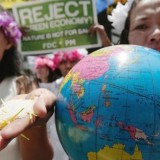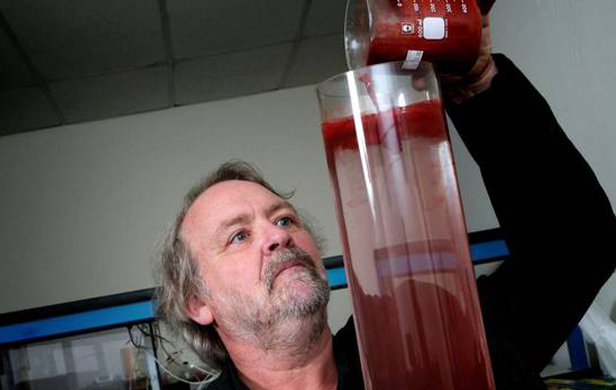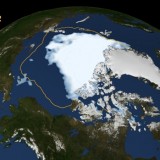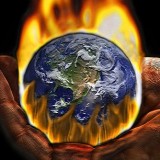Most words are to be read and forgotten; others are to be read and remembered; and some few are to be read, remembered and considered carefully. The words of Michael Marshall fall into the last category. They appear in “Climate’s Dark Dawn”, an article in NewScientist (Dec. 31/11).
The poignancy of Marshall’s words derive from the scientific consensus that we can’t afford to warm the planet any more than 2°C without incurring climate change that could be catastrophically stressful to a global civilization already under pressure from other serious environmental threats. In response to this warning, our leaders at international gatherings have concurred with the scientific consensus, have adopt this temperature increase as their tolerable upper limit, and have pledged that regulations on allowable emissions will hold the global temperature increase below this critical mark.
But modelling of these pledges shows “that even if those cuts were implemented in full we would still see 3.5°C of warming by 2100,” writes Marshall. And this temperature increase could easily escalate to the 4.0°C that “could wipe out the Amazon rainforest and halt the Asian monsoons” (Ibid.).
So, here are Marshall’s words to be remembered and considered carefully. “The reality is that the 2°C target is technically and economically feasible,” he writes, “but politically impossible.” In other words, we have the technology to reduce greenhouse gas emissions sufficiently to avoid the serious environmental consequences of raising the global temperature above 2°C. We even have an economy that can afford to do so. But our leaders lack the political will to rectify a problem that they both recognize and have the power to correct.
This failure of political will is disappointing, destructive and cancerous. It creates a metastasizing cynicism that infects optimism with pessimism. It transforms high hope into sinking despair. When forecasts are bleak but corrective resolve is weak, we abandon the best and resign ourselves to the worst. Everything we think and do is shadowed with frustration. Trust is replaced by suspicion. So we drift in confusion and conflict rather than moving together with focus and resolve. Indeed, if our leaders would publicly acknowledge that global warming and its haunting partner, climate change, were as serious as scientists describe, then we could unite in common cause and firm commitment. But without the political declaration, direction and leadership, we flounder.
This is why the future isn’t what it used to be. The mood of innocence and optimism that once pervaded our individual and collective lives is now sobered by the growing realization that we are confronting a major environmental crisis without leadership. We have reached the edge of yet another crucial limit without an initiation or coordination of remedial measures.
We now know that almost everything positive we want to do comes with negative consequences that weigh against the folly of proceeding with thoughtless habit. Old practices, once accepted and unquestioned, are presently complicated with unwanted results and complex ethical dilemmas. It is the role of our leaders to read this conundrum and steer us through a dangerous and difficult course. Instead, they are silent. Or even worse, they remain the proponents of the thoughtless habits that mire us in a deepening problem.
This is the root explanation for the rising chorus of public objections to mines, pipelines, oil tankers, tar sands, free trade agreements, international financial systems and a corporate world of manufactured venality and consumerism. All these practices are carrying us in the direction of environmental trouble rather than away from it. Negativity becomes the pervasive mood because the pervasive course is negative. We cannot be hopeful if we are moving in the direction of our undoing. When we are not actively pursuing solutions to difficult problems then the frustration accumulates as cynicism. If society’s energies are not directed in constructive behaviour, they are wasted in destructive diversions.
The role of political leaders is to inform and lead the public. If they are in denial about the global climate crisis, or if they are deliberately avoiding the scientific evidence, or if they are attempting to deceive, then their exercise is futile and defeating. This is the age of information. People know. They can recognize dishonesty because it appears as hypocrisy.
People also recognize honesty and bravery, the attributes of heroes, visionaries and leaders. “Politically impossible” is the acquiescing course of the opportunist who follows the path of old destructive habits even when a better route is known.
The present is connected to the future through the unfolding of circumstances. We know how those circumstances are unfolding. So, what will be history’s judgment of those who knew of the unfolding climate crisis but did not act to prevent it? When something could have been done, ethics require action. History has declared that “politically impossible” has never been an excuse for abject and wanton neglect.








